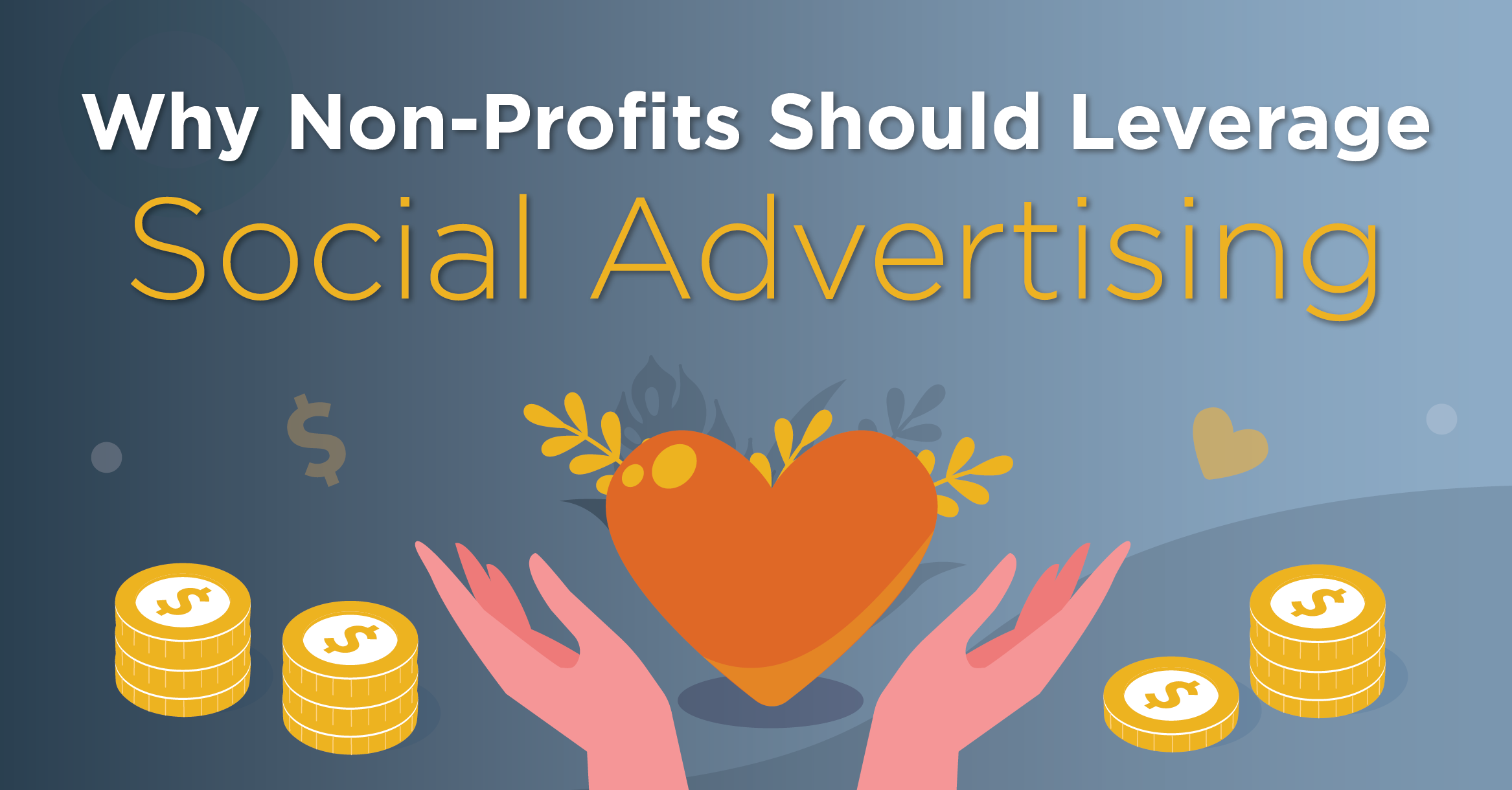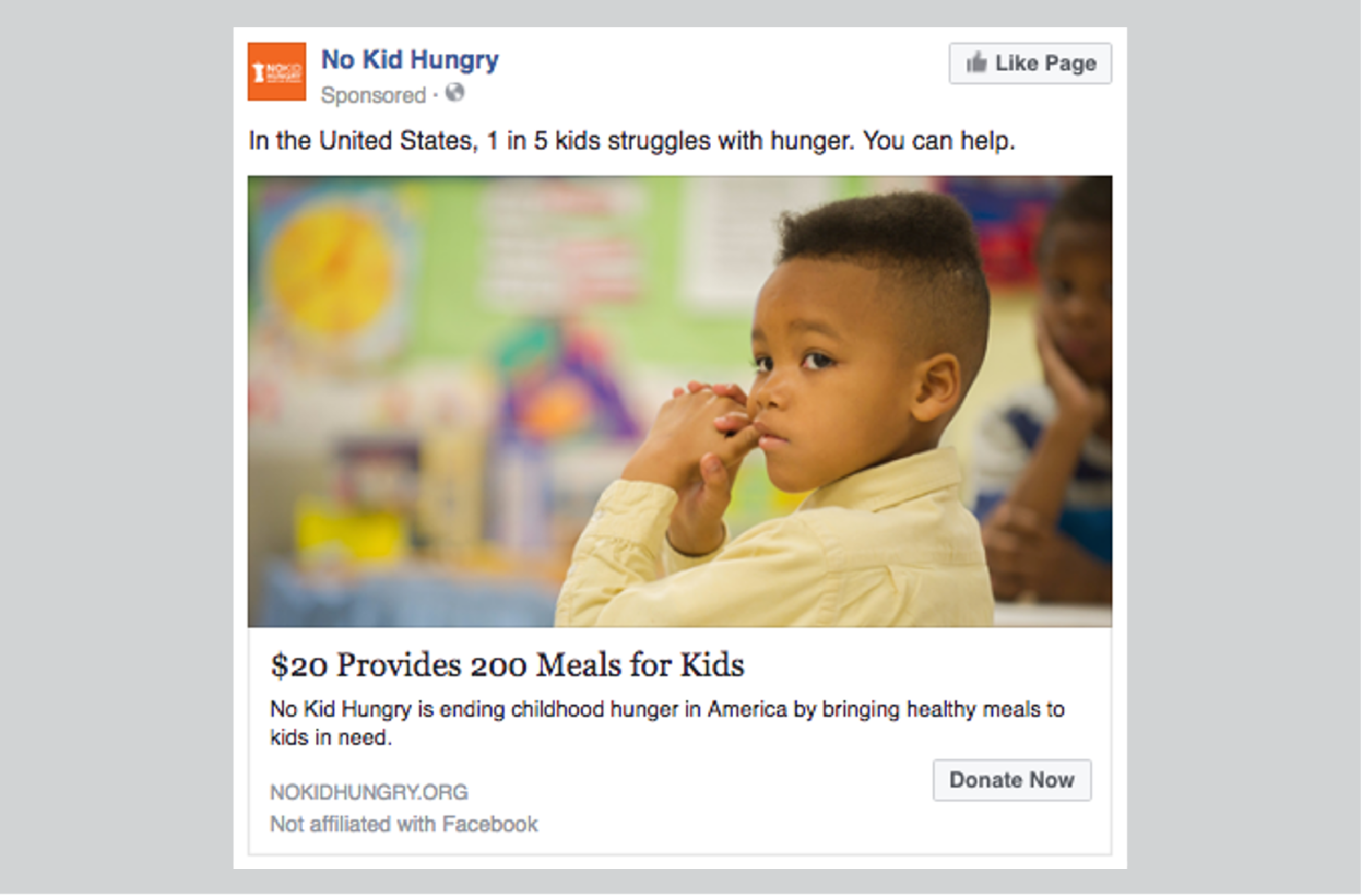- Social Media

We work with a fair number of non-profits, and we love them!
Just like for-profit organizations, non-profits must market themselves, although the ultimate objective is different (gaining support or increasing uptake of services versus selling something). But there’s some added complexity. I’m talking about—of course—the limited budget. Maximizing budget is even more important for non-profits than it is for for-profits. Funding is precious, and you, non-profit team member, want to steward it well and make sure as much of it as possible goes to the programming your organization exists to provide.
That’s why we often encourage our non-profit partners to take advantage of social media advertising.
What is Social Advertising?
To be clear, we’re not talking about social media marketing in general here. Social media marketing is the broad strategy of using social media platforms to connect with your audience—whether organically (unpaid) or paid. Social media advertising is the practice of using paid social media ads.
Here’s an example of an organic Facebook post (what you’d send out on your Facebook timeline) versus a Facebook ad.

A simple organic post with a caption and photo.

You can see how this Facebook ad is more complex than the organic post. It has a caption like organic posts do, but it also has a headline, sub-headline, and CTA button to a link. And, at the top, it notably states “sponsored.”
Why Pay to Run Ads?
You might wonder, “If social media marketing can be used for free, simply by posting regular organic posts, then why pay to run ads?”
It’s a great question. Here’s the answer: Because few people see your unpaid posts.
Because of the overwhelming glut of content posted to social media platforms today, social media companies have had to design their algorithms to give you only the content they see as most relevant to you. That’s why you tend to see posts from certain friends and groups that you interact with most. The average reach of organic (unpaid) social media posts on Facebook is five percent. Five percent.
Some people go as far as to say that “organic social is dead.” We don’t think that’s true. An organic presence can still have indirect benefits, like being a great avenue for customer service, positively impacting search engine rankings, and showcasing your organization’s personality. But you should supplement organic strategy with paid advertising (or even weight your strategy more heavily toward advertising). Social media advertising helps you expand reach, put your content in front of more people. And compared to other ad channels, it’s pretty darn affordable. For Facebook ads, the average cost per mille (1,000 impressions) is $7.19, and the average cost of a click is $0.97.
Boosting Vs. Running Ads
If you run or are an admin of your organization’s social pages, I’m sure you’ve boosted a post a time or two (or at least seen the “Boost Post/Promote/Sponsor Now” [the wording depends on the platform] button on an organic post you’ve shared).
Boosting is a type of social advertising. It is the simplest way to run an ad. You put money behind content you’ve already shared. The content is on your organic feed and also promoted as an ad. Boosts are useful because they’re so easy. You just click the button, pick a few options, and you’re off.
Running actual social ads takes more effort. But it also gives more options. You can choose different ad placements, use specific ad objectives, have more creative options (like carousel ads), and use more advanced targeting.
Actually going into an ad manager to create social ads also opens up the opportunity to create a campaign (a set of 2+ ads that focus on a single topic, like a general introduction to your organization). Single ads are useful, but campaigns can be set up to guide viewers through the Donor’s Journey (awareness, consideration, decision).
How to Get Started
Social media advertising can seem really intimidating. There are ad managers to navigate. You’ve got to figure out your budgets and timelines and what you want your ads to say. You need graphics.
If you have the budget, we highly recommend working with a marketing agency. Experienced marketers can help you build effective ads very efficiently. You could even have them create and run your first campaign and give you the know-how to take it from there.
But, if you need to figure out social advertising yourself, start small. Pick one platform—the one that your audience is most likely to be on (here’s a handy guide to choosing which social platform to advertise on). Then, spend some time exploring in the advertising module. See what ad formats and targeting options are available to you.
Decide what you want your ad to communicate. Since it’s your first ad, a general awareness ad or campaign (to help ad viewers get to know your non-profit) could be a good idea. Your content should say what you need to say but be short and sweet. Your graphic should be as high quality as possible. You can use an image, a designed graphic, a video. In fact, videos are the most engaging medium, so we highly recommend that avenue whenever possible. Here’s a great guide for creating or selecting social media visuals.
As far as audience, try to be as targeted as you can. Social media ad targeting options have narrowed in recent years, as the topic of user privacy has gained attention, but there are still powerful options. Use as many of the targeting options in the manager (like geography, interests, income, education level) as apply in order to whittle your audience down to those who are most likely to interact with or take action based on your ad.
Now the money talk. How much do you need to spend on social ads? It really depends! We generally see that the more a business spends, the more results they get. We suggest starting with a “comfortable” spend. If you’re doing one ad and just want to see what happens, try putting twenty bucks behind it. If you’re running a campaign (with multiple ads in a set), start around $50 or $100. You can always add more budget to a campaign.
How long should ads run? Again, it depends. Watch closely and see when views and engagement start to drop off. For a single ad, that could be a week or month (depending on your budget). For campaigns with multiple ads serving simultaneously, that could be several months. Keep an eye on it!
Effective social advertising, as with all things marketing, relies on testing. You don’t know until you try. So test different images, content, budgets, timing. Social ad platforms allow for A/B testing or ad rotation.
Retargeting
With the Facebook Pixel and LinkedIn Insight Tag, you can “retarget” your social media ads to people who have already visited your website. With these pixels, you’ll be able to show ads to people who are much more likely to take action. The pixels are relatively simple to set up, usually by pasting a line of code into your site.
Controversy
Non-profits exist to help. We completely understand why some non-profits might be reticent to put more money in the pockets of organizations like Facebook—which don’t always have the public’s best interest at heart.
Look, we’re not Facebook’s or any social media company’s biggest fan by any means. But we also know how hard it is to get your message out there today, and social ads are one of the best and most affordable ways to do that.
Of course, follow your beliefs. Don’t use social ads if it feels wrong. There are other ways to get your message out digitally.
Conclusion
Social advertising is a very powerful way for you to reach more people on social media and gain their support. Sure, you’ll have questions as you get started. Google will be your best friend, or feel free to reach out to us!
SHARE IT!
-
Culture
How TikTok is Changing the Ad Game
-
Digital Ads
What You Need to Know About the Changes to Facebook Targeted Advertising




